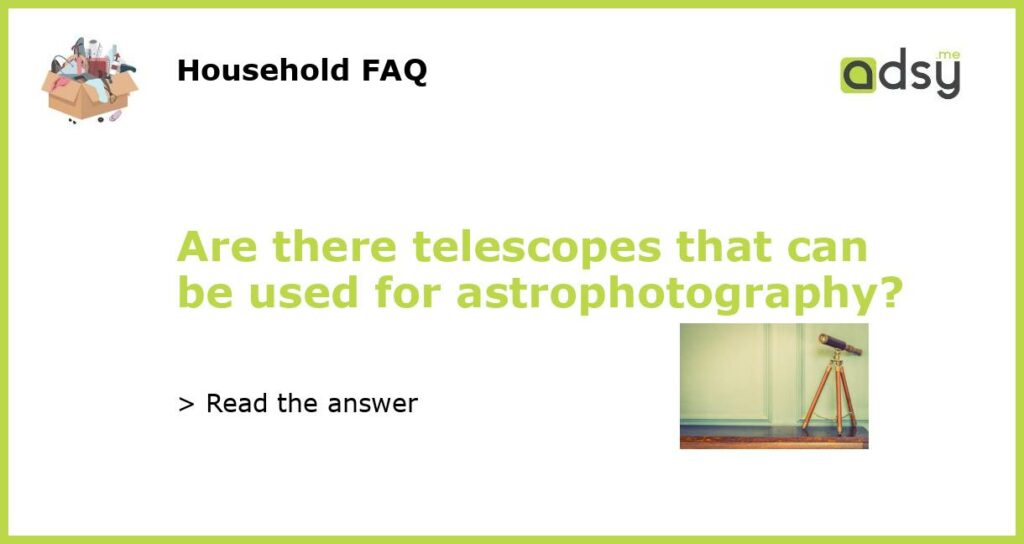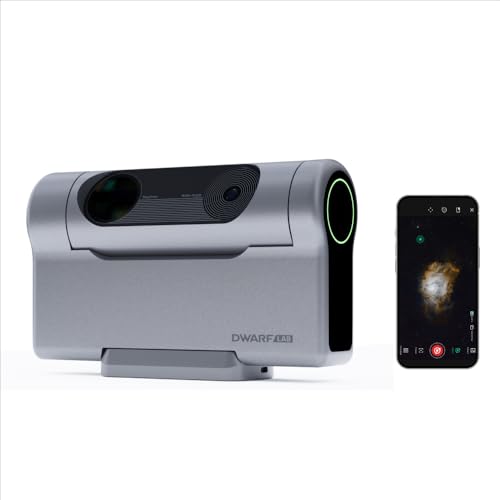Yes, there are telescopes specifically designed for astrophotography
Astrophotography is the art of capturing images of celestial objects such as stars, planets, and galaxies. To achieve high-quality astrophotography, specialized equipment is required, including telescopes that are designed specifically for this purpose.
What is astrophotography?
Astrophotography is a branch of photography that focuses on capturing images of celestial objects. It requires long exposures to capture the faint light emitted from stars and galaxies. By using telescopes with long focal lengths and large apertures, photographers can capture detailed images of celestial objects that are otherwise difficult or impossible to see with the naked eye.
What makes a telescope suitable for astrophotography?
Not all telescopes are suitable for astrophotography. The key factors that determine whether a telescope is suitable for astrophotography are its focal length, aperture, and tracking capabilities. Here’s why these factors matter:
Focal length:
The focal length of a telescope determines the magnification and field of view. For astrophotography, a longer focal length is preferred as it allows for more detailed images of distant objects. Telephoto lenses and refracting telescopes tend to have longer focal lengths and are well-suited for astrophotography.
Aperture:
The aperture of a telescope determines its light-gathering ability. A larger aperture allows more light to enter the telescope, which is crucial for capturing faint objects in the night sky. Telescopes with larger apertures produce brighter and more detailed astrophotography images.
Tracking capabilities:
Astrophotography often requires long exposure times, ranging from seconds to hours. To avoid star trailing and blurring in the images, telescopes need to have tracking capabilities. Equatorial mounts with motorized tracking systems allow the telescope to follow the rotation of the Earth, ensuring that the objects stay in the same position in the frame during long exposures.
Types of telescopes for astrophotography
There are several types of telescopes that are commonly used for astrophotography. Here are a few examples:
- Refracting telescopes: These telescopes use lenses to focus light and produce images. They are popular for astrophotography due to their long focal lengths and minimal chromatic aberration.
- Reflecting telescopes: These telescopes use mirrors to gather and focus light. They are known for their larger apertures and are commonly used for astrophotography.
- Catadioptric telescopes: These telescopes combine lenses and mirrors to focus light. They offer a compact design and are popular among astrophotographers due to their versatility.
- Telephoto lenses: In addition to telescopes, telephoto lenses designed for photography can also be used for astrophotography. These lenses offer a wide range of focal lengths and allow photographers to capture wide-field images of the night sky.
Additional equipment for astrophotography
In addition to a suitable telescope, there are other pieces of equipment that are essential for astrophotography:
- Mounts: A stable mount is crucial for astrophotography to prevent vibrations and allow for accurate tracking of celestial objects. Equatorial mounts are commonly used for this purpose.
- Cameras: Digital cameras with manual controls and the ability to shoot in RAW format are preferred for astrophotography. Full-frame cameras generally produce better results due to their larger sensors.
- Filters: Various filters can be used in astrophotography to enhance the image quality and reduce light pollution. Some popular filters include light pollution filters, narrowband filters, and UV/IR cut filters.
- Guiding systems: Guiding systems are used to keep the telescope accurately aligned with the objects being photographed during long exposures. They help to compensate for tracking errors and enhance the overall image quality.
- Software: Specialized software is often used for image processing and stacking in astrophotography. This software allows photographers to enhance the details, remove noise, and create stunning final images.
Astrophotography for beginners
Astrophotography can be a challenging pursuit, especially for beginners. However, with the right equipment and knowledge, it is possible to capture stunning images of the night sky. It is recommended to start with a basic entry-level setup and gradually upgrade as your skills and interest develop.
Beginners can benefit from joining local astronomy clubs or online communities where they can learn from experienced astrophotographers and get assistance in choosing the right equipment and techniques. Patience and perseverance are key in astrophotography, as it can take time and practice to master the art of capturing the beauty of the universe through a camera lens.






